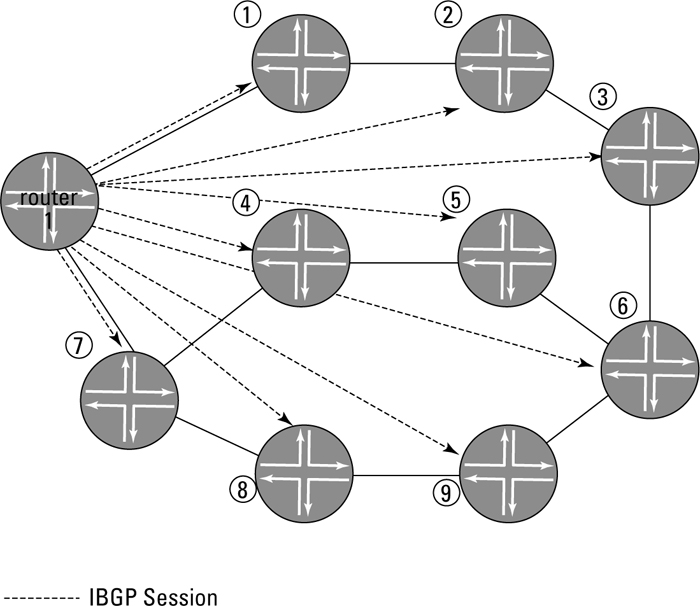Configuring Route Reflection
Configuring BGP can be quite onerous, particularly with large numbers of peering sessions that must be configured manually. In fact, in a large network, the full-mesh requirement for IBGP can be a provisioning nightmare. If you have 10 routers in your network, as shown in Figure 13-8, you have to configure an IBGP session between every pair of routers.

Figure 13-8: A 10-router network illustrating route reflection.
Looking at Figure 13-8, you realize that you have to configure a session on each router to each other router. A formula reveals that you have 45 IBGP peering sessions that need configuring — N*(N-1)/2, where N is the number of routers in your network.
If you've been wondering why BGP wasn't used universally rather than IGPs, it's because IBGP configuration is difficult to maintain. Adding a single router to your network requires that you touch the configuration of every other router that is already in the network. This task is challenging at best and downright unmanageable for large networks.
BGP's answer to the IBGP pairing configuration nightmare that is the full mesh is called route reflection. Route reflection allows sharing of routing information among a group of router without having to send the exact same information to each of them individually. It's sort of like giving information to one person and having them distribute it to all ...
Get Junos® OS For Dummies®, 2nd Edition now with the O’Reilly learning platform.
O’Reilly members experience books, live events, courses curated by job role, and more from O’Reilly and nearly 200 top publishers.

